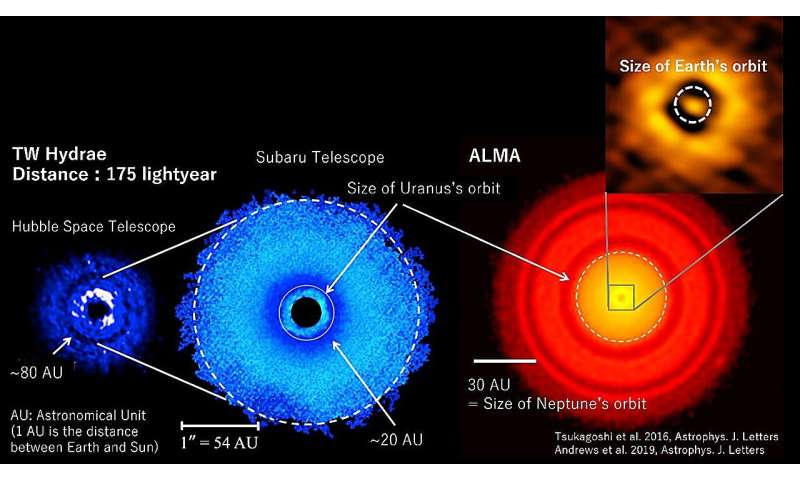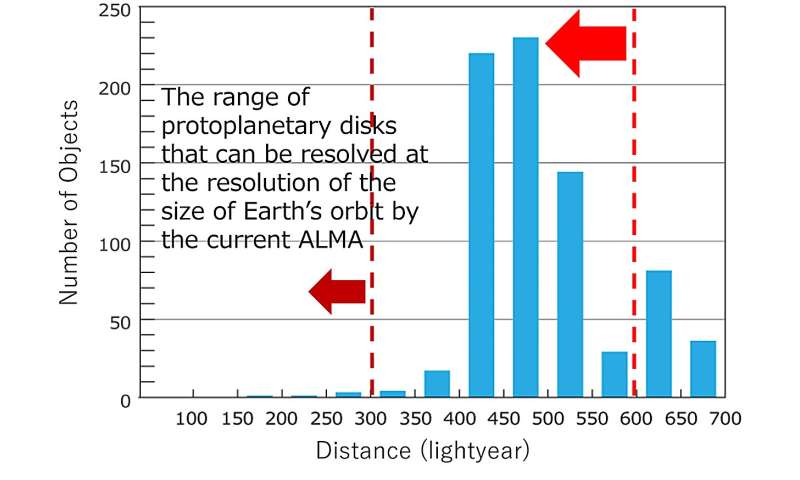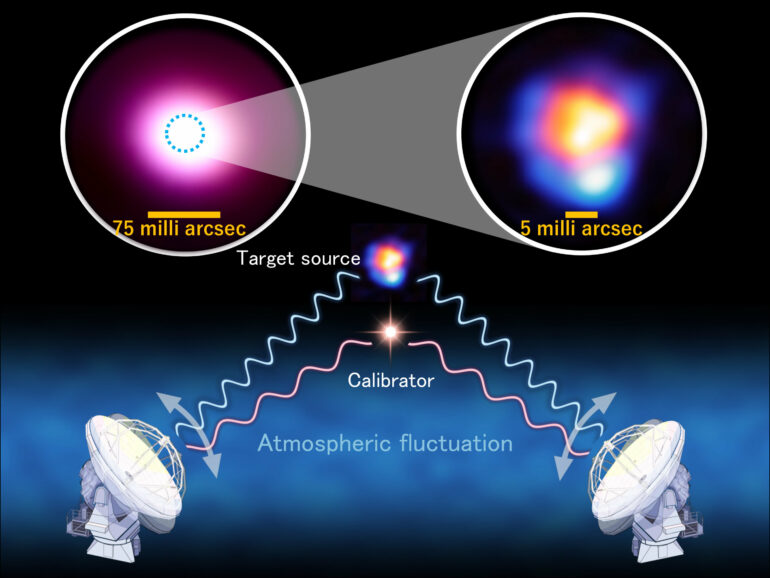ALMA (Atacama Large Millimeter/submillimeter Array) has demonstrated the highest resolution yet with observations of an old star. The observations show that the star is surrounded by a ring-like structure of gas and that gas from the star is escaping to the surrounding space. Future observations with the newly demonstrated high resolution are expected to elucidate not only the end of a star’s life but also the beginning, when planets are still forming.
ALMA is a radio interferometric array telescope, in which individual antennas work together to observe a celestial object. ALMA’s resolution, the ability to see small details, is determined by the maximum separation between the antennas and the frequency of the observed radio waves.
In this research, an international team composed mainly of astronomers from the Joint ALMA Observatory, National Astronomical Observatory of Japan (NAOJ), National Radio Astronomy Observatory, and European Southern Observatory used ALMA’s maximum antenna separation of 16 km and highest frequency receivers (known as Band 10, up to 950 GHz) to achieve the best resolution possible. This work resulted in two papers published in The Astrophysical Journal and The Astrophysical Journal Supplement Series.
Pushing ALMA’s resolution to new limits also required a new calibration technique to correct for fluctuations in Earth’s atmosphere above the antennas. The calibration technique the team used, known as “band-to-band (B2B),” was originally tested in the 1990s at Nobeyama Radio Observatory of NAOJ for future millimeter/submillimeter interferometers.

The protoplanetary disk around TW Hydrae imaged in optical (observed with the Hubble Space Telescope), near-infrared (Subaru Telescope), and radio (ALMA). In the optical and near-infrared images captured with the Hubble Space Telescope and the Subaru Telescope, we can see the dust disk but cannot see the disk region in the vicinity of the central star because the light from the central star, which is too bright compared to the disk, needs to be blocked. In this regard, ALMA is suitable for observing the region down to the size of Earth’s orbit. © NAOJ, ALMA (ESO/NAOJ/NRAO), Tsukagoshi et al., Andrews (Harvard-Smithsonian CfA)

The number of protoplanetary disks as a function of distance from Earth. Previous ALMA observations were able to achieve an angular resolution corresponding to Earth’s orbit only for a few objects within about 300 light-years from Earth. The improved angular resolution will increase the number of objects by approximately 100 times. © NAOJ
For their demonstration observations, the team chose R Leporis, a star in the final stage of stellar evolution, located approximately 1,535 light-years away from Earth. The team succeeded in observing R Leporis with the best resolution ever, 5 milli-arcsec, which is the equivalent of being able to see a single human hair two and a half miles away. The observations show the surface of the star and a ring of gas around the star. The team also confirmed that gas from the star is escaping to the surrounding space.
This newly demonstrated high resolution capability can now be applied to young stars with protoplanetary disks where planets are forming. Future high-resolution observations will provide new insights into how planets, particularly Earth-like planets, form.
More information:
Luke T. Maud et al, ALMA High-frequency Long-baseline Campaign in 2019: Band 9 and 10 In-band and Band-to-band Observations Using ALMA’s Longest Baselines, The Astrophysical Journal Supplement Series (2023). DOI: 10.3847/1538-4365/acd6f1
Yoshiharu Asaki et al, ALMA High-frequency Long Baseline Campaign in 2021: Highest Angular Resolution Submillimeter Wave Images for the Carbon-rich Star R Lep, The Astrophysical Journal (2023). DOI: 10.3847/1538-4357/acf619
Provided by
National Astronomical Observatory of Japan
Citation:
ALMA demonstrates highest resolution yet (2023, November 15)
